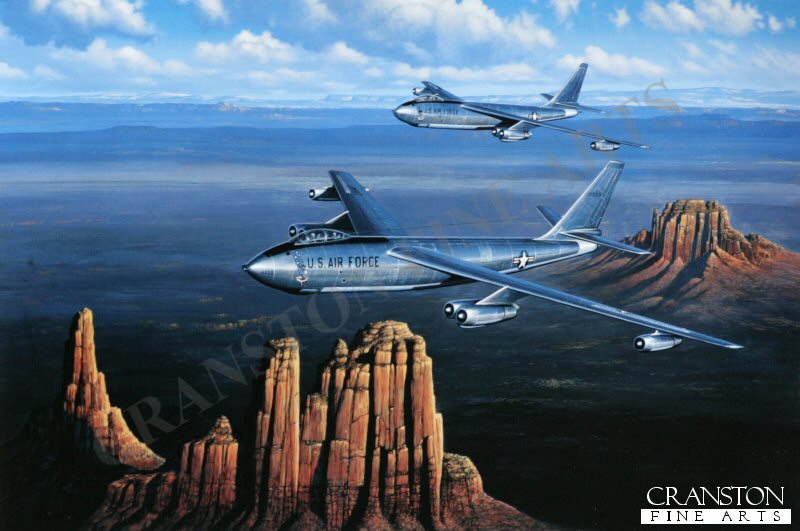- Sku:
- Vendor: Military Aviation Art Prints
New Breed Bombers by Stan Stokes.
The Boeing B-47 Stratojet was the first swept-winged, jet bomber that was built in any meaningful quantity. It became the backbone of the Strategic Air Commands bomber fleet for much of the 1950s. More than 2000 B-47s were produced. The origin of the B-47 can be traced back to a request in mid-1943 by the USAAF asking several aircraft manufacturers to commence studies of the feasibility of producing a multi-engined jet aircraft for photographic reconnaissance and or medium bombing missions. By November of 1944 formal requirements were issued for a jet-powered aircraft capable of 550-MPH, a ceiling of 45,000-feet, and a range of 3,500 miles. Boeing aircraft had been experimenting with jet engines for its B-29, but had encountered problems during wind tunnel tests. In 1944 Boeing was awarded a study contract designated XB-47 for a Model 432. The 432 was a highly modified B-29 with a cluster of 4 jet engined mounted inside the fuselage. Martin, Convair, and North American all received contracts for studies on other competing aircraft. In 1945 George Schairer, Boeingss chief aerodynamicist visited German research facilities. The Germans had done research proving the advantages of swept wing design for high-speed aircraft. Boeing modified its design to a swept-wing version, and at the urging of the USAAF eventually removed the in-fuselage jet engines in favor of externally mounted engines. Work on the B-47 protoypes began in 1946. The aircraft would have a crew of only three. Pilot, co-pilot/gunner, and bombadier/navigator. The pilot and co-pilot would sit tandem in a fighter style plexiglass bubble cockpit whereas the navigator/bombadier would sit in the nose behind a transparent nose cone. The B-47 had a thin wing, and all its fuel was carried inside the fuselage. Managing fuel during flights was important to prevent the aircraft from becoming unstable. Because of its high speed it was expected that the B-47 would only be attacked from the rear. Hence the only defensive armament incorporated in the design was a pair of remotely-controlled, radar-managed, machine guns in a rear turret. The first prototype flew on December 17, 1947, only two months after Chuck Yeager broke the sound barrier. In September of 1948 the Air Force placed its first order for production B-47s. In early 1949 one of the prototypes set an unofficial continental speed record of 602-MPH. The first production B-47A flew on June 25, 1950. In Stan Stokes painting a pair of the new breed of bombers pass over some interesting scenery in the western portion of the United States.
Supplied with signed and numbered certificate of authenticity.
Signed limited edition of 4750 prints.
Print size 16 inches x 11.5 inches (41cm x 30cm)
Have a question?

New Breed Bombers by Stan Stokes.


